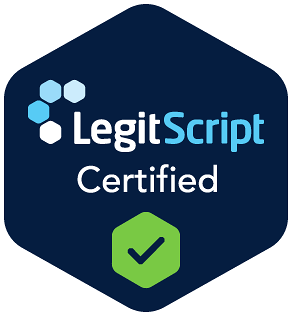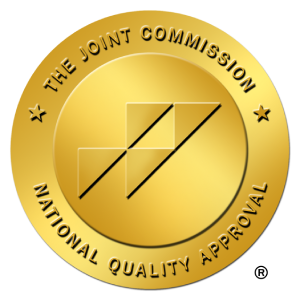During your initial 30 days of heroin recovery, you’ll face physical withdrawal symptoms starting 6-24 hours after last use, peaking around 48-72 hours. Your success depends on building a strong support network combining professional help, family support, and peer groups. Focus on establishing daily routines with mindfulness practices, structured activities, and consistent self-care. By understanding your triggers and implementing prevention strategies, you’ll develop the resilience needed for long-term recovery. The following insights can strengthen your expedition toward sustained healing.
Physical Withdrawal Challenges and Management

While the expedition to recovery from heroin addiction requires immense courage, understanding the physical withdrawal process can help prepare for the challenges ahead.
Recovery demands bravery, but knowing what lies ahead on the path to healing can illuminate the darkest moments.
Your body will experience significant changes as it adjusts to functioning without heroin, typically beginning 6-24 hours after the last use. Initial symptoms include muscle aches, sweating, and insomnia, peaking around 48-72 hours with intense nausea and cramping. Patients often experience tachycardia and hypertension during this critical period. Many individuals may develop watery discharge from their eyes and nose as part of the withdrawal symptoms. Those experiencing withdrawal commonly develop severe mood swings that can complicate the recovery process.
To prevent long term medical complications, professional medical supervision is essential during this phase. Withdrawal management may include prescribed medications, necessary sign monitoring, and specialized care for those with concurrent health conditions.
While physical symptoms generally subside within 3-10 days, implementing relapse prevention strategies early is paramount, as cravings can persist for months. Understanding this timeline helps create realistic expectations for the recovery path ahead.
Building Your Support Network for Success

Once you’ve navigated the physical challenges of withdrawal, a strong support network becomes your foundation for sustained recovery. Structured group participation in 12-step programs and professional guidance provide essential accountability, while engaging family support helps rebuild trust and establish healthy boundaries. Research shows that 30+ days of treatment significantly improves long-term sobriety outcomes. Studies indicate that relapse rates affect 40-60% of individuals in recovery, making ongoing support crucial for maintaining sobriety. Support services are utilized by approximately 17% of people in recovery through various channels.
| Support Type | Benefits | Key Actions |
|---|---|---|
| Professional | Clinical expertise, MAT management | Connect with counselors, recovery coaches |
| Family | Emotional stability, daily support | Set boundaries, educate on addiction |
| Peer Groups | Shared experiences, 24/7 access | Attend meetings, join online communities |
Consider hybrid approaches combining in-person and virtual support options. Track your participation in recovery activities, as consistent engagement correlates with better outcomes. Distance yourself from negative influences while building connections with those who understand and support your recovery endeavor.
Daily Coping Strategies and Routines

Establishing daily coping strategies creates a resilient defense against relapse triggers and promotes lasting recovery. Taking time to wait and breathe before responding to stressful situations helps prevent impulsive decisions. Practicing HALT awareness helps identify when you’re most vulnerable to cravings. Start by incorporating spiritual practices like mindfulness meditation into your morning routine, dedicating 10-20 minutes to breathwork and emotional awareness.
Structure your day with time-blocked activities, including holistic self-care through exercise, proper nutrition, and consistent meal times. Developing healthy communication skills helps build a strong support network essential for maintaining sobriety.
Combat cravings through creative outlets that redirect your energy try art, music, or skill-based hobbies that provide measurable achievements. Track your emotional experience through journaling, using gratitude lists and mood tracking to identify patterns and triggers.
End each day with calming wind-down rituals that support quality sleep and stress management. Remember, these routines aren’t just activities they’re powerful tools rebuilding your neurochemical balance and strengthening your recovery foundation.
Understanding Triggers and Prevention Plans
Because successful recovery hinges on recognizing and managing relapse triggers, developing an all encompassing prevention plan is essential for long-term sobriety. You’ll face both environmental and psychological triggers, including social media influences that might showcase past using environments or connections. Understanding that 54.57% of users relapse within the initial month emphasizes the critical nature of your early prevention strategies. The first three to six months prove especially challenging, as relapse rates peak during this period. Studies show that eight in ten heroin users experience at least one relapse during recovery.
Your prevention plan should integrate family involvement as a protective factor, while addressing potential triggers like financial stress, unresolved trauma, or exposure to drug related locations. Work with your support team to create specific responses for high-risk scenarios, including alternative coping mechanisms and emergency contacts. Remember, recovery isn’t about perfect avoidance but rather about building sturdy response strategies when triggers arise. Incorporating evidence-based treatment approaches like Cognitive Behavioral Therapy can significantly improve your ability to understand and cope with triggers effectively.
Mindfulness and Emotional Recovery Tools
The integration of mindfulness and emotional regulation tools creates a powerful foundation for neurological healing during heroin recovery. Through focused attention training, you’ll strengthen your prefrontal cortex, improving impulse control and disrupting automatic craving responses. Regular practice of mindful awareness helps reshape your brain positively. Mindful training enhances self-control and awareness of compulsive behaviors. Additional treatment approaches can complement mindfulness practices for optimal recovery outcomes.
The 5-4-3-2-1 grounding technique and body scan practices help anchor you in the present moment, reducing stress-induced urges.
Compassion based resilience develops through self-compassion exercises and loving kindness meditation, addressing the shame and guilt often experienced during recovery. You’ll learn to “surf” urges rather than react to them, while emotional labeling helps diminish their intensity.
These mindfulness practices match the effectiveness of narcotics for pain management while promoting long-term neuroplasticity. By incorporating trauma-informed approaches and gratitude practices, you’ll build sustainable emotional regulation skills essential for your recovery expedition.
Frequently Asked Questions
How Do I Discuss My Recovery Journey With My Children?
Keep open communication with your children by using developmentally-appropriate language and honesty. Share your experiences in a way they’ll understand, emphasizing that you’re working to get better.
Make family support a priority by scheduling regular talks in a calm environment. Remember to validate their feelings, answer their questions patiently, and reassure them of your love.
Consider involving a family counselor to help guide these conversations effectively.
Can I Continue Working During the First Month of Recovery?
Yes, you can continue working, but you’ll need to make work schedule adjustments to accommodate treatment requirements. During your initial month, supervised medication dosing and therapy appointments will require flexibility from your employer.
Consider connecting with recovery support programs that specialize in workplace integration. Be prepared for potential physical and emotional challenges, and don’t hesitate to request accommodations many employers are legally required to support your recovery path.
What Happens if I Need Surgery While in Early Recovery?
Surgery during early recovery requires careful planning. You’ll need to inform your healthcare providers about your addiction history so they can coordinate your care effectively.
They’ll develop a specialized pain medication management plan that balances your comfort with relapse prevention, often using non-opioid alternatives and regional anesthesia when possible. Your medical team will work closely with your addiction specialists to monitor your recovery and adjust treatment as needed throughout the surgical process.
Should I Disclose My Addiction Recovery Status to Potential Romantic Partners?
When traversing dating concerns, you’ll want to balance honesty with maintaining privacy. While disclosure can strengthen trust and allow partners to provide informed support, timing is pivotal.
Consider waiting until mutual trust is established and you feel emotionally ready. Research shows that supportive relationships improve recovery outcomes, but early disclosure carries risks.
You’re in control of when and how much to share focus on what feels right for your recovery path.
How Does Recovery Affect My Ability to Travel Internationally?
You’ll need to carefully plan international travel during recovery due to significant cross border travel restrictions. Many countries strictly regulate or ban addiction medications, and some even test for drug metabolites upon entry. Research international treatment options and local laws before departure, and always carry proper medical documentation.
Consider postponing non-essential travel during early recovery, as the stress and potential gaps in support networks could challenge your stability.






